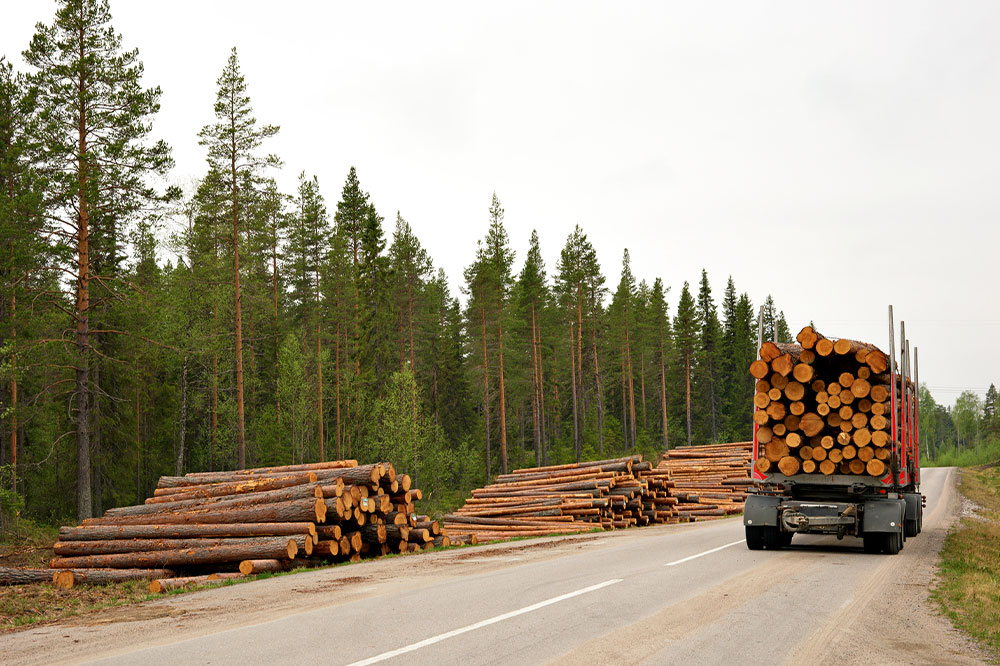
A detailed guide on forestry and logging
Forestry and logging are vital to maintaining and obtaining the Earth’s most valuable natural resource, timber. Timber is not only necessary for construction, furniture, and other businesses, but it also contributes to forest health and biodiversity. This article goes into the realm of logging and forestry, looking at the tools, equipment, services, and employment opportunities. Let’s understand and learn why this industry is important for sustainable resource management.
The role of forestry and logging
Forestry and logging refer to the techniques of carefully planning, cultivating, and harvesting forests. These operations ensure that timber is used responsibly while maintaining the forest ecosystem’s biological equilibrium. Proper forest management and logging practices can stimulate forest regeneration, making forests a renewable resource for future generations.
Essential forestry logging tools
Proper equipment and machinery are necessary to cut and transport logs from one place to another. For this purpose, the following forestry logging tools are used.
- Chainsaws
Chainsaws are essential logging tools for felling trees efficiently and precisely. Modern chainsaws have safety features and ergonomic designs that increase operator comfort and reduce fatigue. - Logging trucks
Logging trucks are specially constructed vehicles transporting harvested logs from the forest to processing plants. - Harvesters
Harvesters are automated machines that fall, limb, and cut trees into logs at breakneck speed and precision. They improve efficiency and reduce the work needed in logging operations. - Skidders
Skidders are large pieces of equipment transporting fallen trees from the forest to the loading area. They are outfitted with massive grapples or winches to move logs through rugged terrain.
Services offered in forestry and logging
The forestry industry plays a vital role in managing the natural resources of a certain area. The following are some forestry and logging services provided by companies.
- Timber harvesting
Timber harvesting is the selective removal of mature trees for commercial purposes. This procedure considers elements such as tree size, species, and general forest health. - Forest management
Forest management services aim to keep forests healthy and productive through selective harvesting, insect control, and reforestation. - Reforestation and afforestation
Reforestation entails replanting trees in locations where they have been harvested, ensuring that forests continue to flourish. Afforestation, on the other hand, entails the planting of trees in previously unforested areas. - Land clearing and site preparation
A forest logging company conducts land clearance for various uses, such as agriculture and infrastructure development.
State-of-the-art forestry and logging equipment
Several types of forestry and logging equipment are used for cutting trees and delivering logs. Here are some examples.
- GPS technology
GPS technology is utilized to map forests precisely, track logging activities, and arrange efficient timber delivery routes. - Drones in logging operations
Drones provide essential airborne data, such as forest inventory and monitoring. It allows for better forestry management decision-making. - Automated logging machinery
Technological advancements have resulted in the creation of automated machinery. It has reduced the demand for manual work while enhancing overall safety.
Forestry logging jobs to pursue
The forestry industry offers skilled and general workers many opportunities and career paths. Some are listed below:
- Truck drivers for logging
- Heavy equipment operators
- Logging and forestry supervisors
- Environment supervisors
- Material handlers
- Silviculturists
- Zoologists
- Foresters
- Biological technicians
- Conservation scientists
Forestry and logging are vital components of responsible resource management, delivering valuable timber to the globe while maintaining forest ecological balance. The sector continues to evolve via modern technologies, equipment, and sustainable methods. It provides various chances for both professional progress and environmental stewardship. The forestry and logging business can secure a greener future by balancing commercial interests and environmental concerns.




